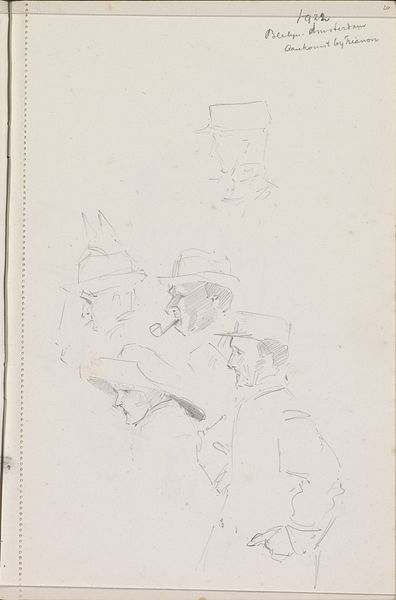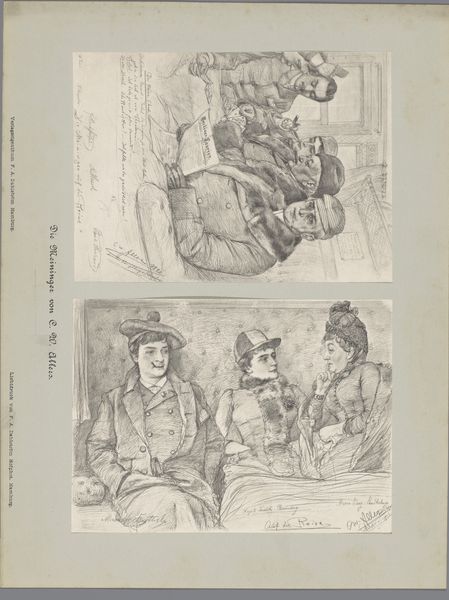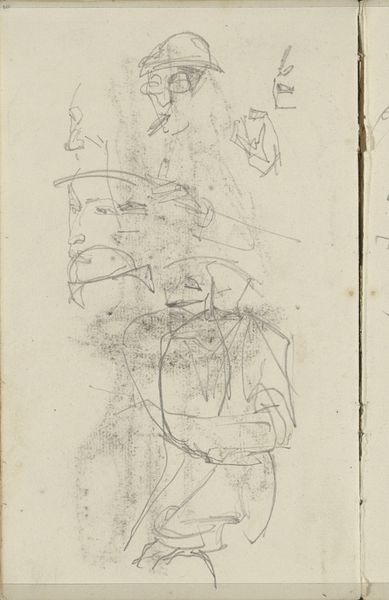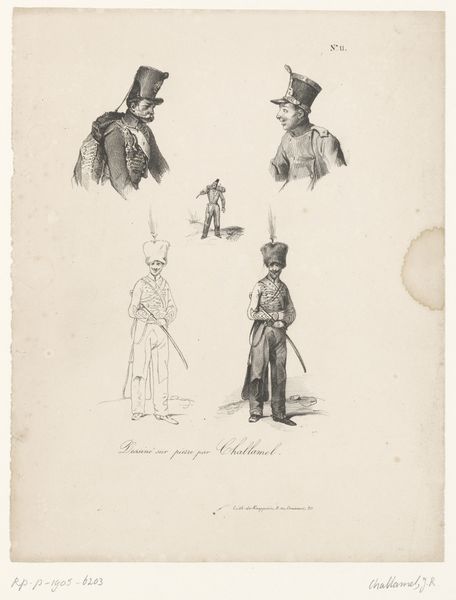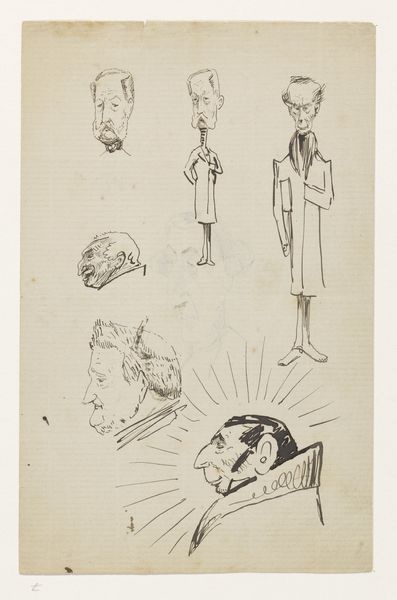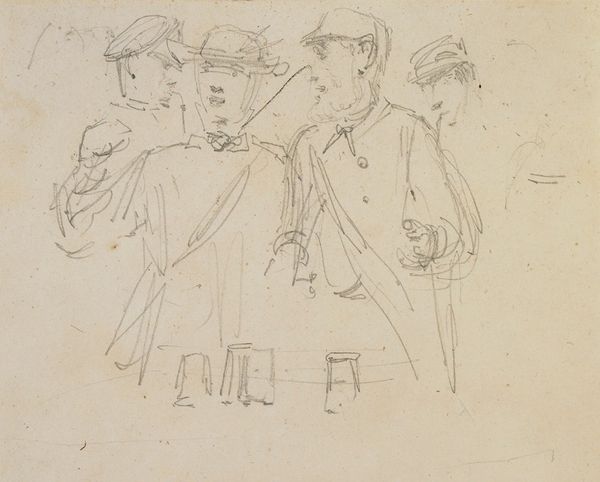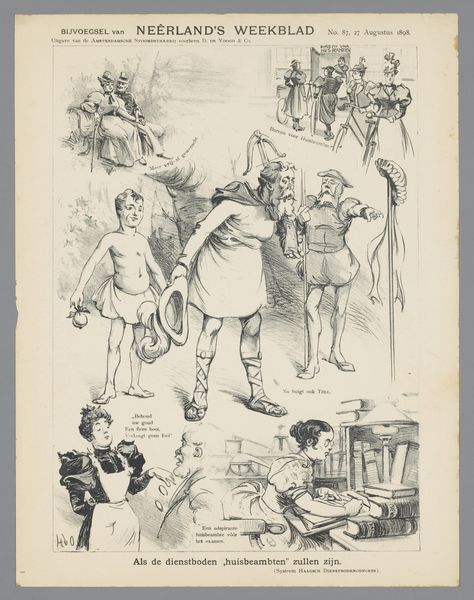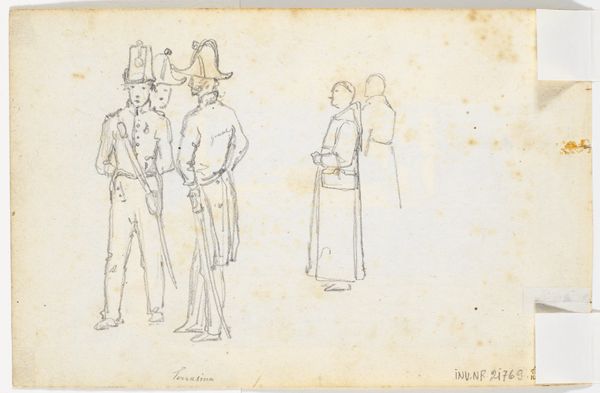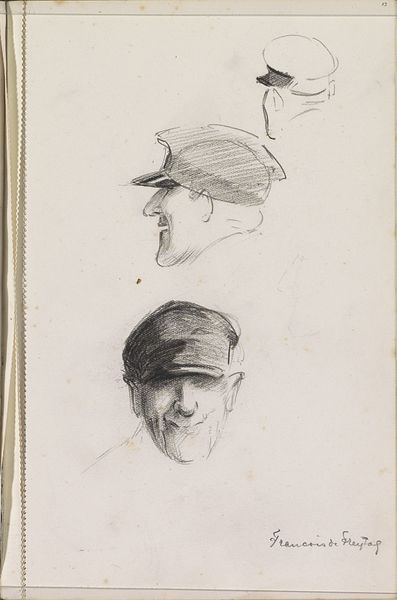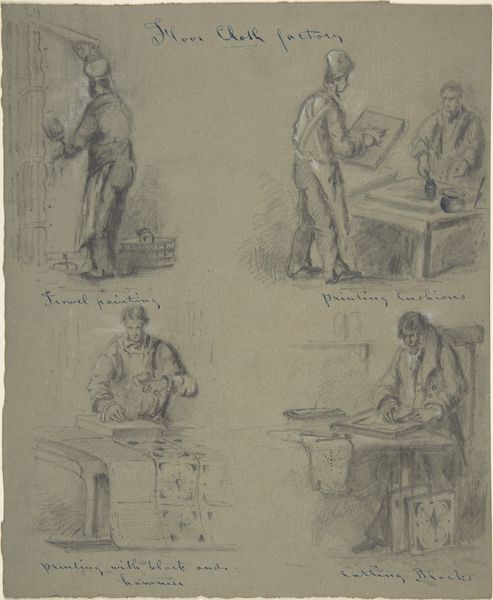
Portrætter af Carlo Dalgas, J. Th. Lundbye, Svend Grundtvig og Major Blom 1835
0:00
0:00
drawing, print, pencil
#
portrait
#
drawing
# print
#
romanticism
#
pencil
#
academic-art
Dimensions: 483 mm (height) x 352 mm (width) (bladmaal)
Editor: Here we have P.C. Skovgaard's "Portraits of Carlo Dalgas, J. Th. Lundbye, Svend Grundtvig and Major Blom," made in 1835 with pencil. I am really intrigued by how the subjects all seem to be facing in slightly different directions, with different head coverings or military attire. What stands out to you in this piece? Curator: The way Skovgaard captures these figures, especially considering the context of 1835 Denmark, opens a fascinating lens into issues of national identity and cultural formation. This was a period when ideas of Romantic nationalism were really taking hold, shaping perceptions of Danishness. We see the influence of academic art, the rise of Romanticism... but what about who is included and excluded? Editor: Can you explain what you mean? Curator: Think about it: these aren't just portraits; they're portrayals of specific societal roles – the military man, the intellectual, the artist. Skovgaard's work is participating in constructing the visual language of Danish identity. We need to ask: whose faces are being foregrounded, and whose stories remain untold? How do you feel the way these men are drawn contribute to a certain perception of power and authority? Editor: So, the portraits aren't just about capturing likenesses, but about building a visual representation of Danish society and its values at that moment. The act of choosing these specific figures sends a very loud message. Curator: Precisely. It makes you wonder about the role art plays in reflecting – and reinforcing – existing power structures. And whether these figures represent a diverse selection of the population, considering aspects of class, gender, or other marginalized identities. It prompts an essential dialogue about who gets to define national identity. Editor: This makes me see how much a simple portrait drawing can actually be a mirror reflecting society’s values and its hidden power dynamics. Thanks, I now have a lot more to think about. Curator: Absolutely, and that critical lens will help unlock even more stories these artworks have to tell.
Comments
No comments
Be the first to comment and join the conversation on the ultimate creative platform.
